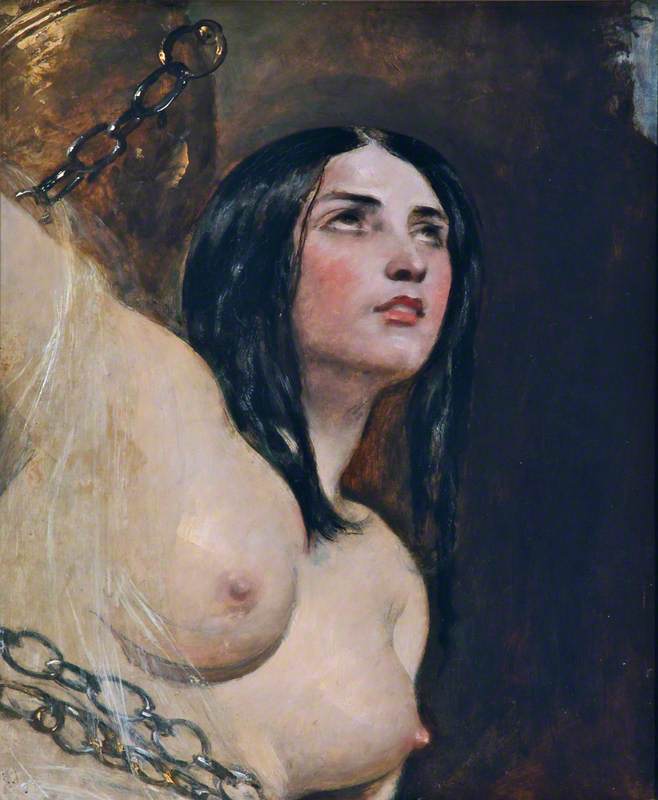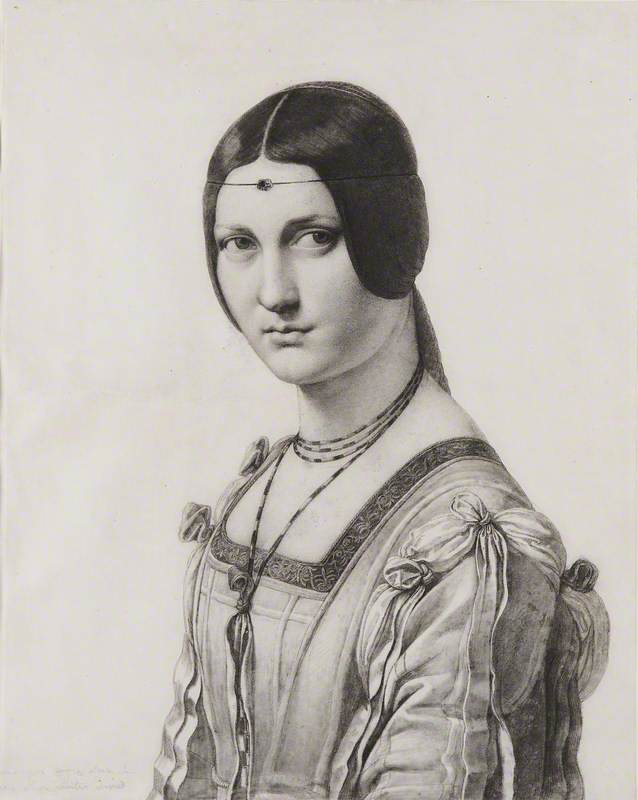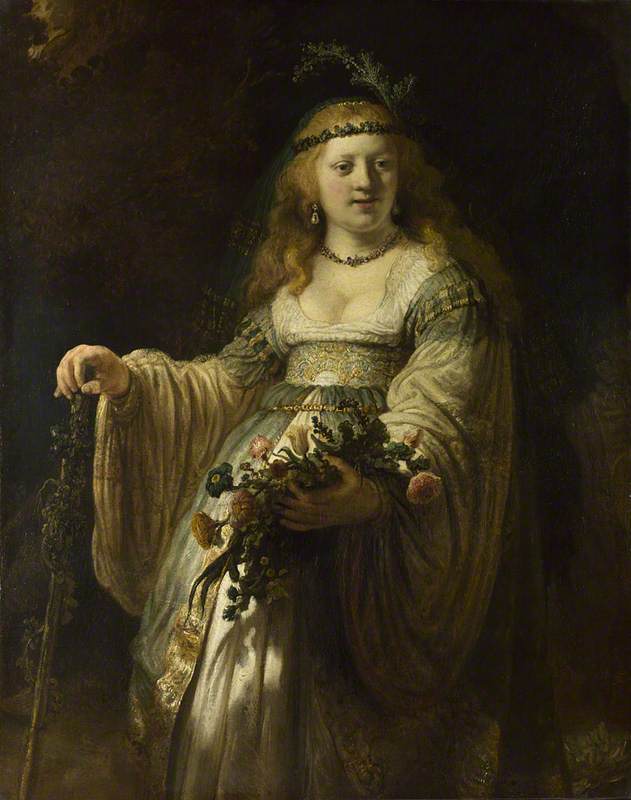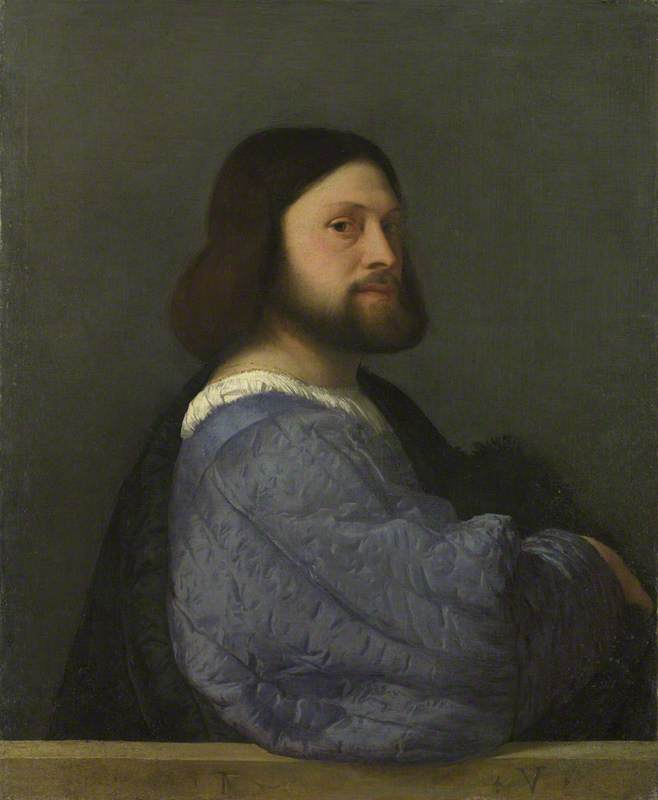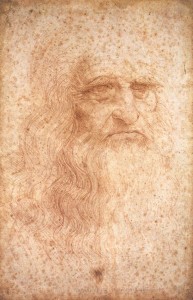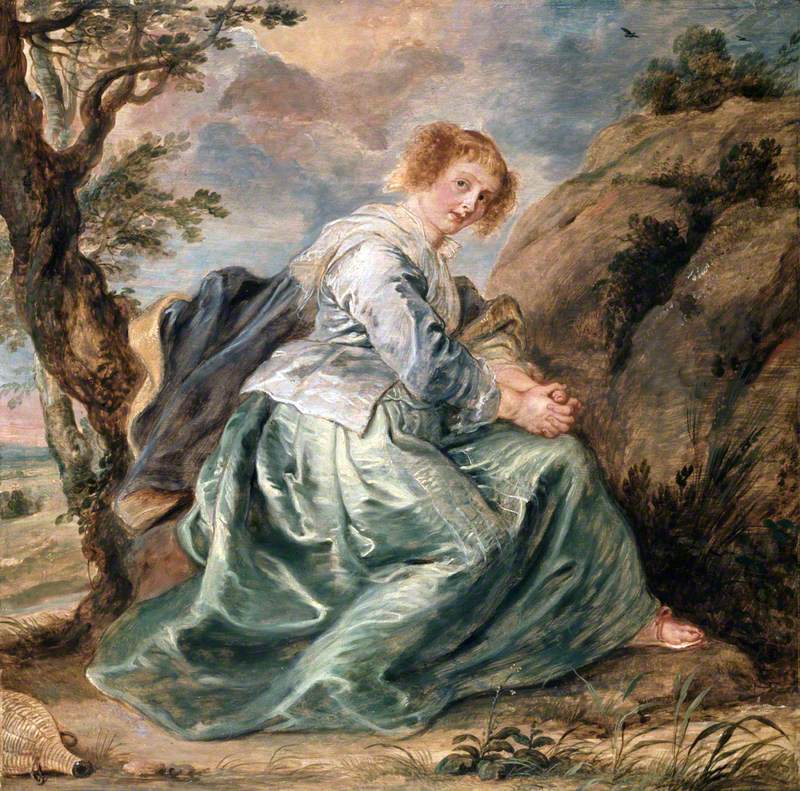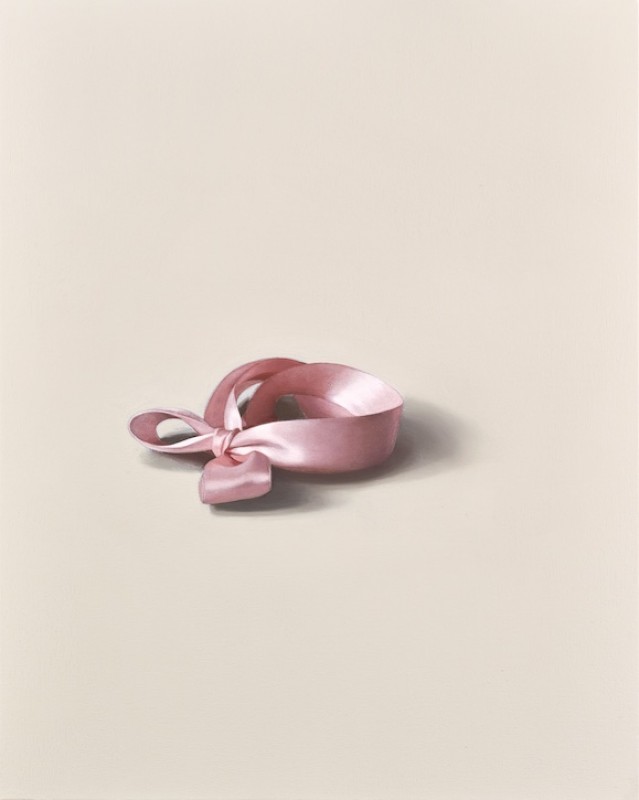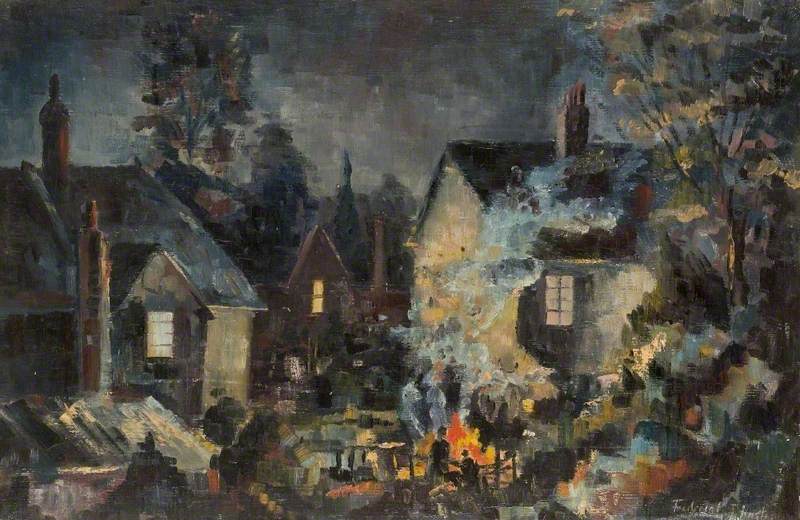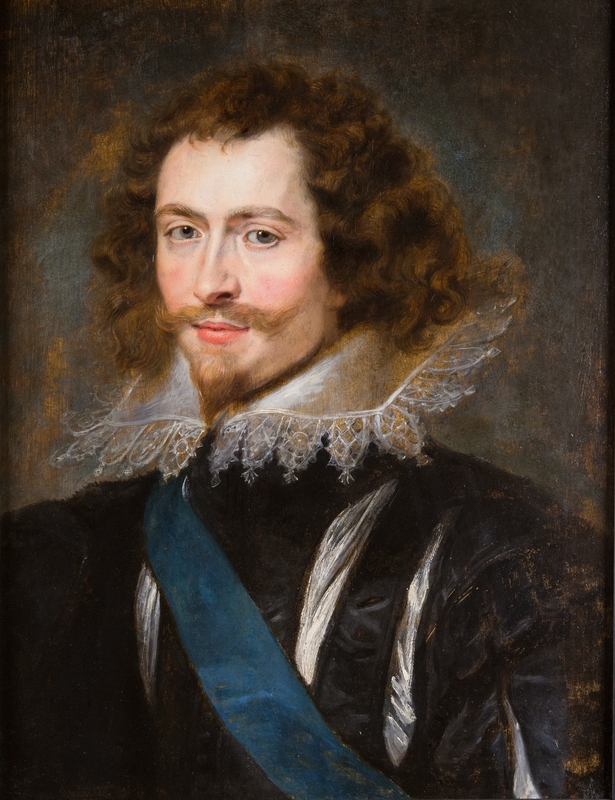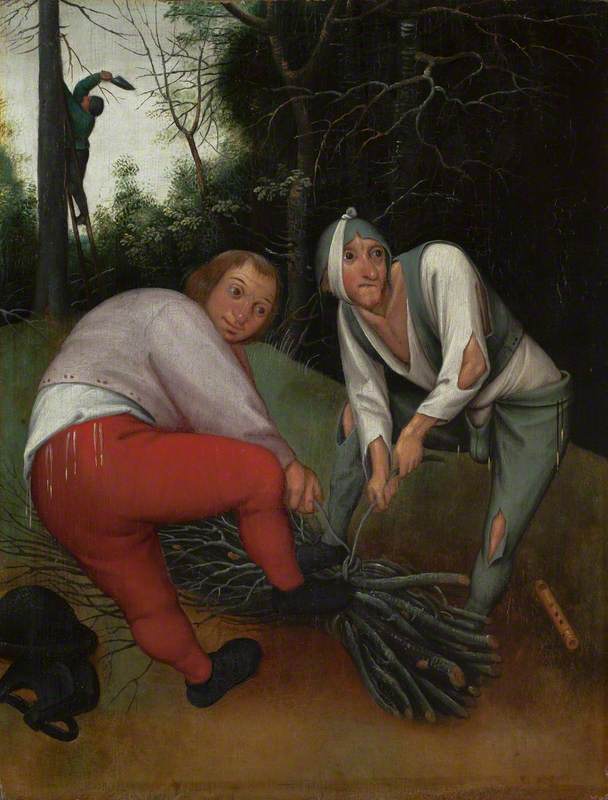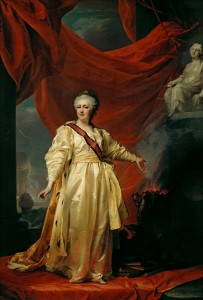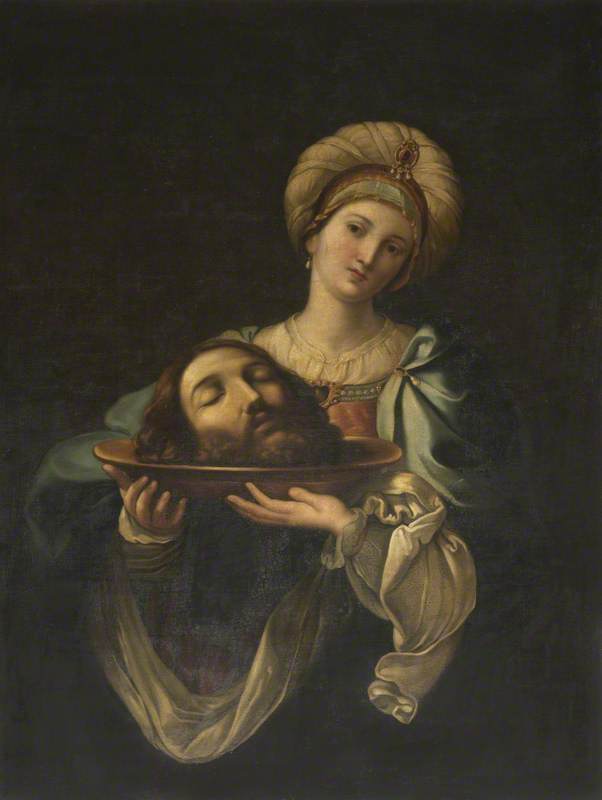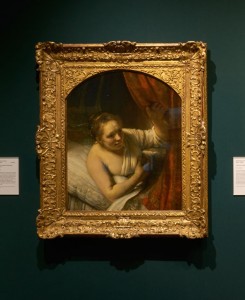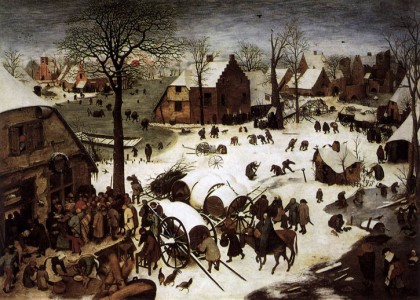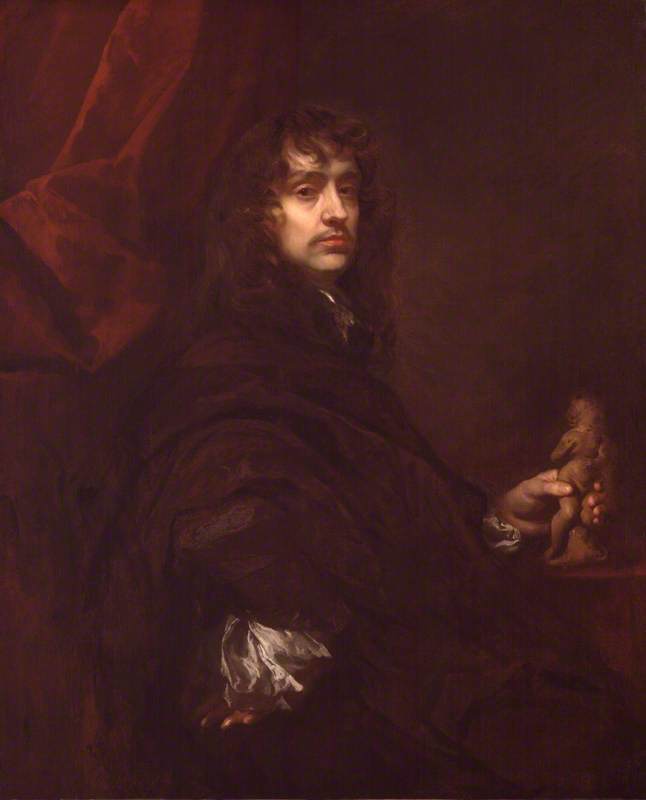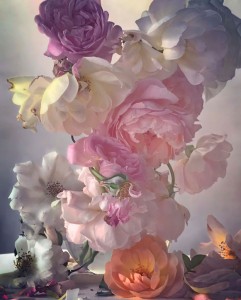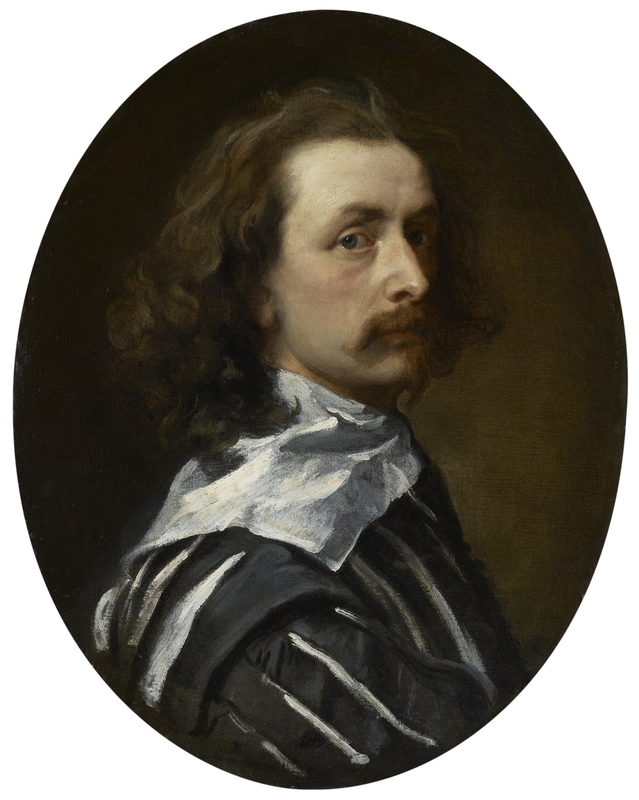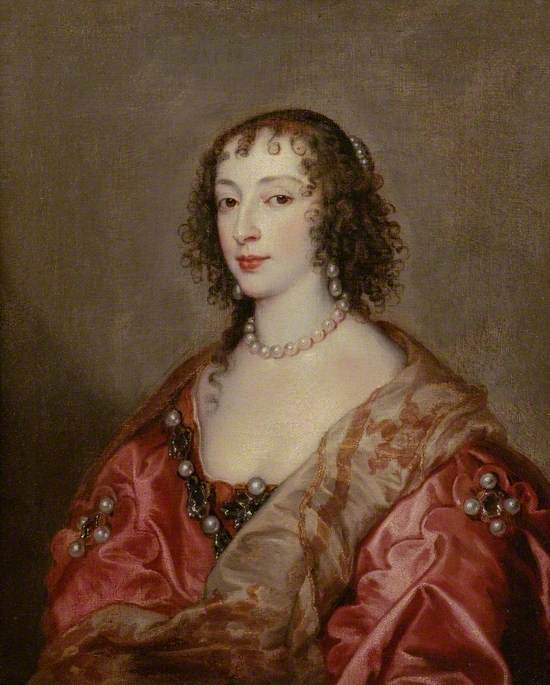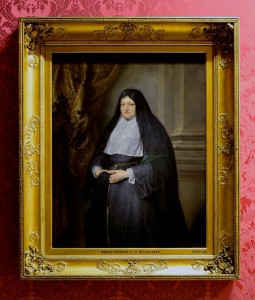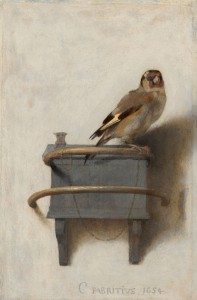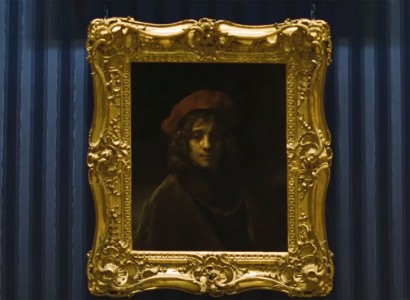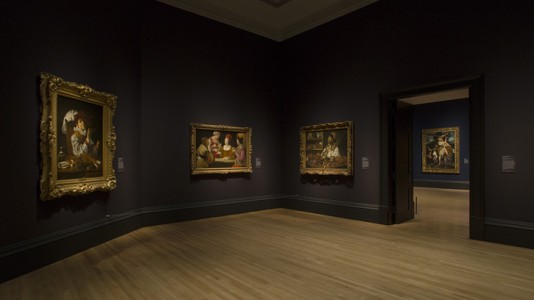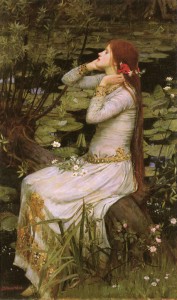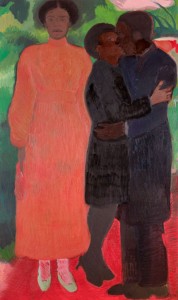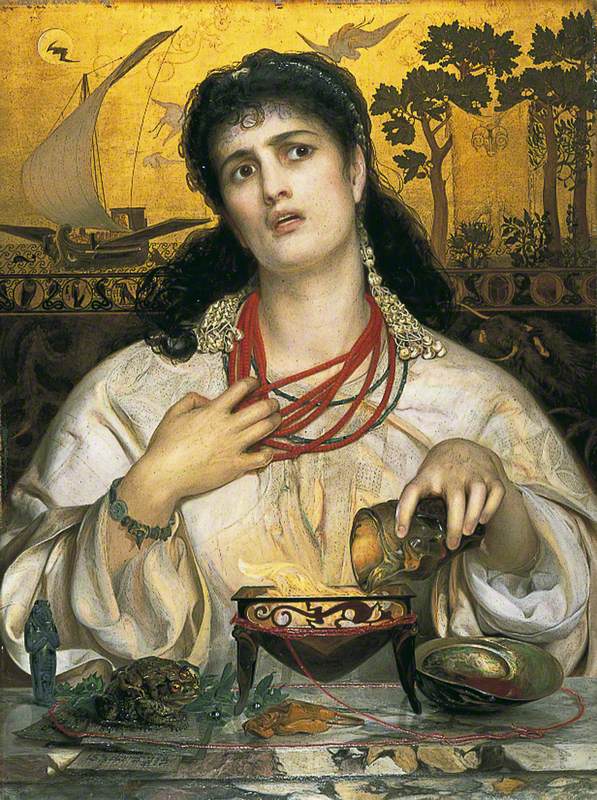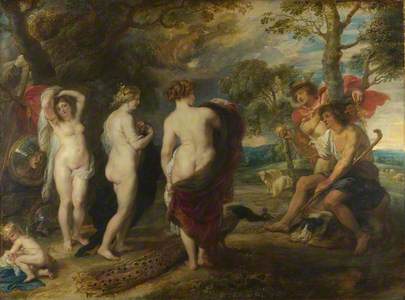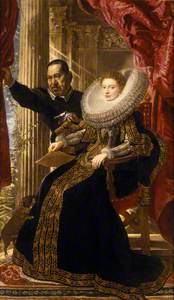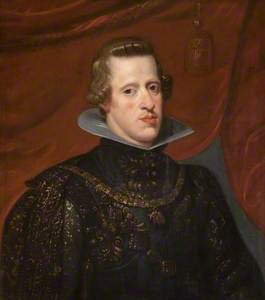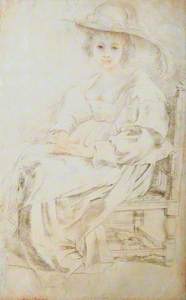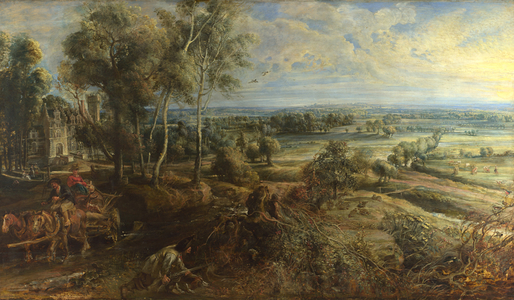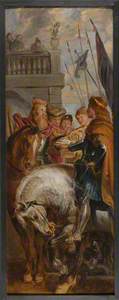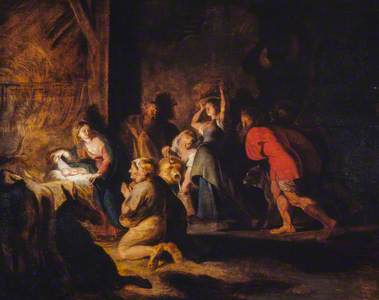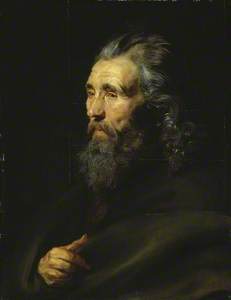In his lifetime Peter Paul Rubens was described as 'prince of painters and painter of princes'. A key figure in seventeenth-century Flanders, his fame spread across the whole of Europe.
Since his death, his influence has also been immense, with artists as diverse as Watteau, Delacroix, Constable and Renoir looking to him for inspiration.
He is one of the few artists to have a widely used adjective made from his name – 'Rubenesque' refers to the voluptuous body shape of many of the women he painted.
Nature and Her Followers
c.1615
Peter Paul Rubens (1577–1640) and Jan Brueghel the elder (1568–1625) 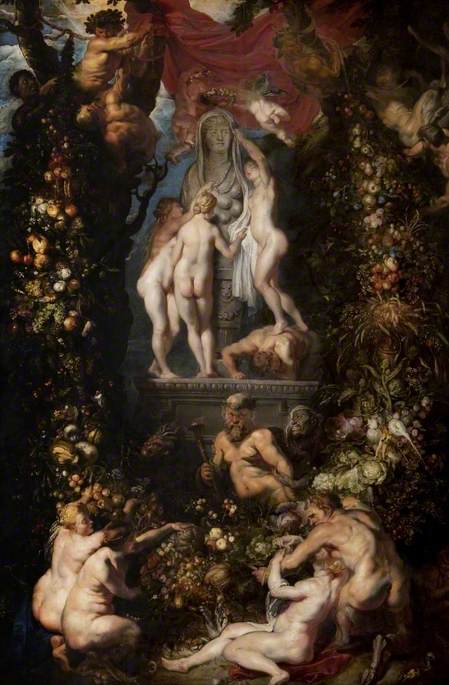
Although in the popular imagination he may largely be known for one thing – the size and shape of his female models – this is not representative of his work, and his variety is unrivalled. As well as fleshy baroque paintings of nudes from classical mythology, he also painted many portraits, allegories, history paintings, religious works, and even landscapes towards the end of his life. His sketches are admired today for their free, flowing strokes – interpreted by many as a passionate approach to the canvas.
Rubens was a Flemish artist, but he was born in Siegen (which today is in Germany) on 28th June 1577. At the time of his birth, his father had been forced to leave his home of Antwerp due to the religious persecution of Protestants. Peter Paul Rubens returned to Antwerp with his mother in 1587, after his father's death.
The wars of religion that shook Europe through the sixteenth and seventeenth centuries were the backdrop for many of the events of Rubens' life. Although he had been baptised as a Calvinist Protestant, he later became a devout Catholic. Around the age of 13, he studied under three local master painters, and he became a master in the Antwerp painters' guild in 1598.
Most of Rubens' early works do not survive – it is only after he travelled to Italy in 1600 that we start to see him in action. He was based there – largely in Mantua, Genoa and Rome – until 1608, and unsurprisingly, the rich artistic heritage helped form his mature style.
Vincenzo Gonzaga II (1594–1627), 7th Duke of Mantua
1605–1615
Peter Paul Rubens (1577–1640) 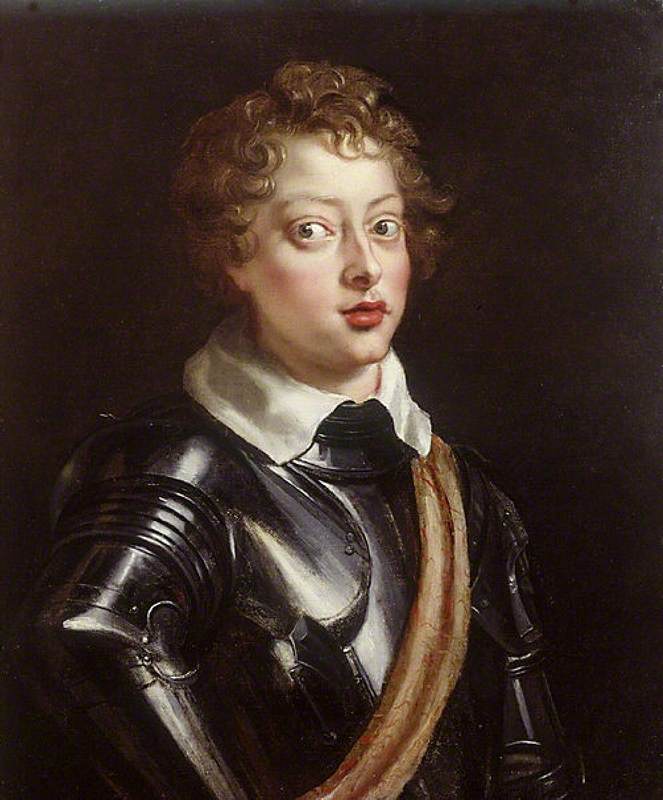
He began working for Vincenzo Gonzaga, Duke of Mantua, and made copies of great Italian art for the duke's own collection. This painting is of the duke's son, Vincenzo II.
Marchesa Maria Grimaldi, and Her Dwarf
c.1607
Peter Paul Rubens (1577–1640) 
In Genoa he painted aristocratic portraits that were later to inspire Van Dyck.
Marchesa Maria Serra Pallavicino (?)
1606
Peter Paul Rubens (1577–1640) 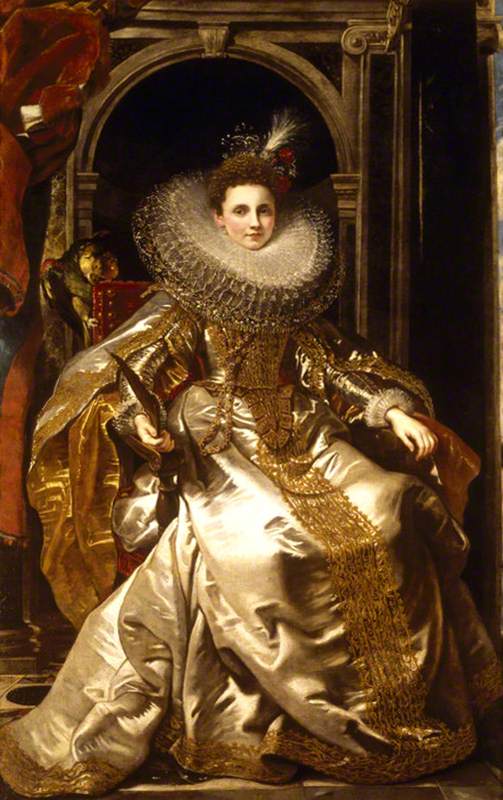
Emperor Charles V
(after Titian) 1603
Peter Paul Rubens (1577–1640) 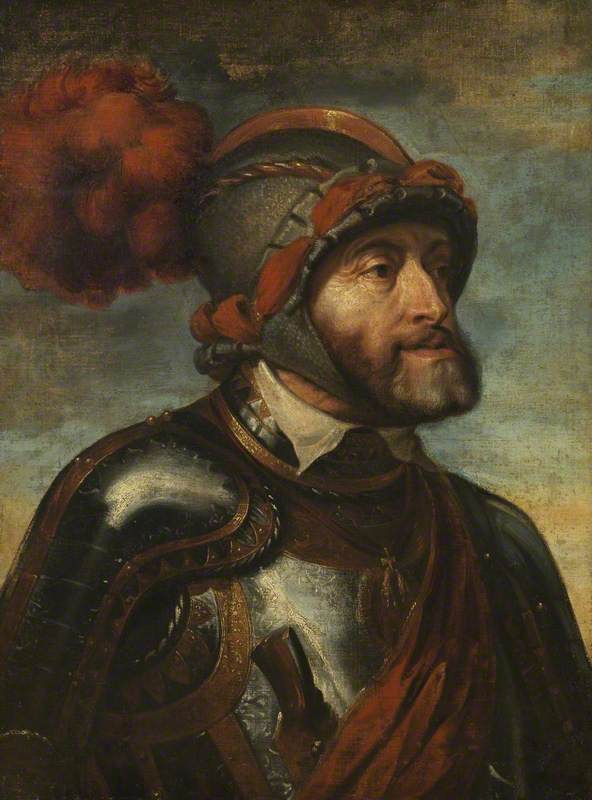
In Rome he studied the works of Renaissance masters, including Titian, as well as the antiquities that are found around every corner.
The 'Apotheosis of Germanicus': Copy after an antique Cameo (The 'Gemma Tiberiana')
1626
Peter Paul Rubens (1577–1640) 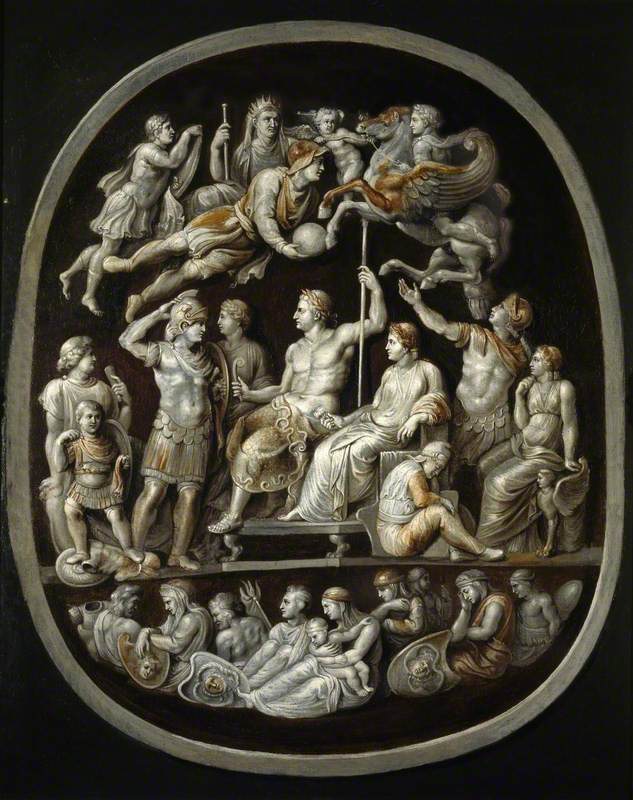
Rubens returned to Antwerp in 1608, and he immediately achieved great success there – although he loved working there, he never saw Italy again. In 1609 he was appointed court painter to the Habsburg rulers of the Spanish Netherlands – Archduke Albert and the Infanta Isabella. He also married his first wife, Isabella Brant, in that year.
Portrait of the Archduke Albert
about 1615
Peter Paul Rubens (1577–1640) (studio of) 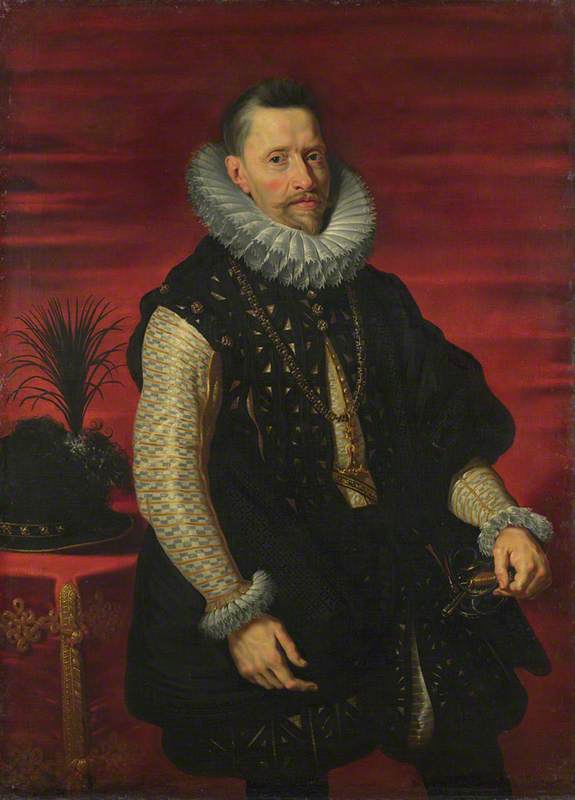
Portrait of the Infanta Isabella
about 1615
Peter Paul Rubens (1577–1640) (studio of) 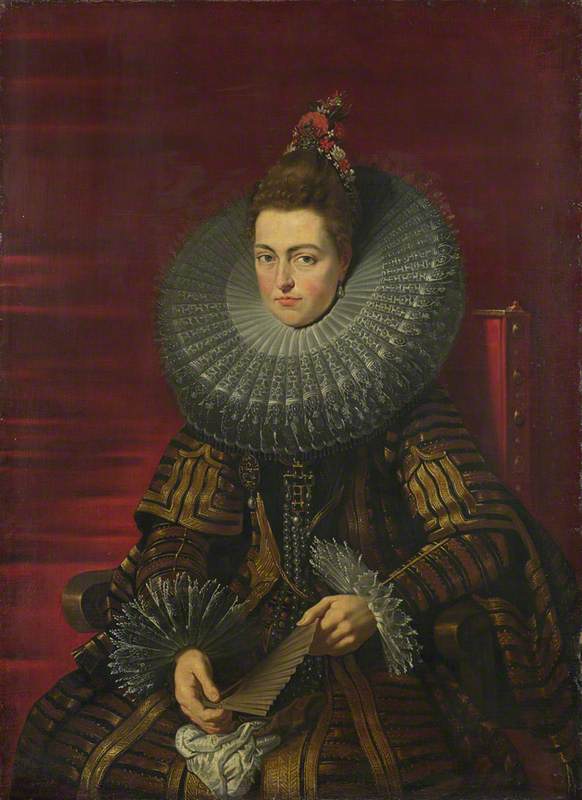
In the next few years, he established himself as the finest painter in northern Europe. Between 1611 and 1614 he worked on the huge triptychs of the Raising of the Cross and the Descent from the Cross in Antwerp Cathedral. This painting, now in The Courtauld Gallery, is likely to have been presented to the cathedral custodians for approval before work started on the large altarpiece.
The Descent from the Cross
1611–1613
Peter Paul Rubens (1577–1640) 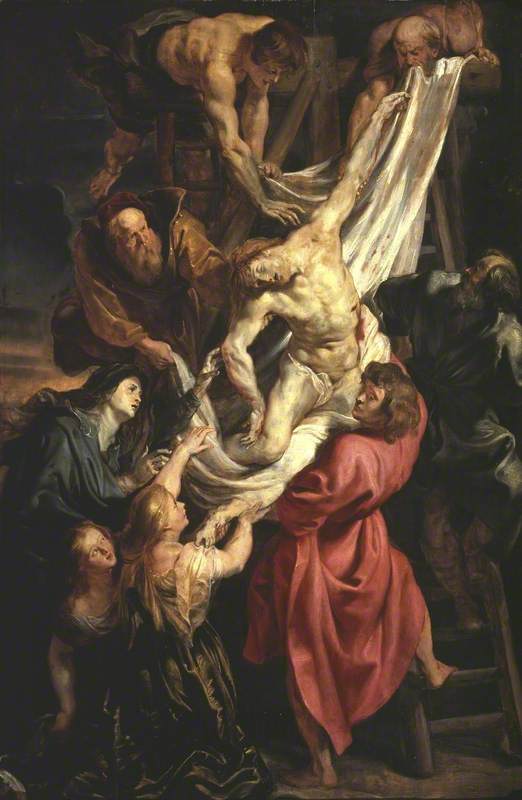
To keep up with the high demand for his work, like many artists of the time, Rubens ran an extremely efficient studio, using pupils or assistants to help produce his works – including Van Dyck. Today, the price of a 'Rubens' will likely depend on how much experts agree he did with his own hand.
As a mark of his status, the royal families of France, England and Spain all wanted Rubens to work for them.
Marie de Médicis (mother of Louis XIII of France) asked him to paint a series of 24 enormous works on her life that are now in the Louvre, Paris. This painting is a sketch from an unrealised further cycle about the life of her husband, the French king Henri IV. The paintings of Henri were abandoned about the time Marie was exiled from the French court in 1631. Rubens' intentions for the series are only known from surviving sketches like this.
The Peaceful Reign of James I (The Wise Rule of James I)
c.1632–1634
Peter Paul Rubens (1577–1640) (and studio) 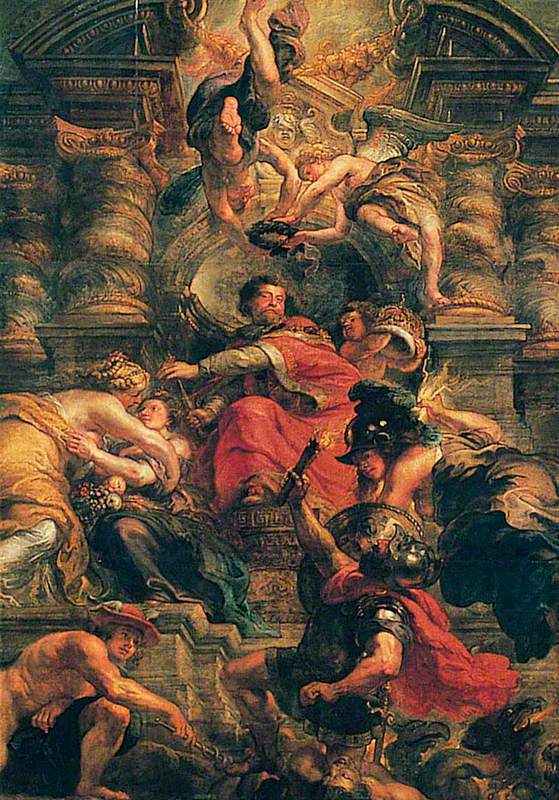
For Charles I of England, Scotland and Ireland he painted a series of works representing the reign of his father, James (VI and I). These were to be displayed on the ceiling of the Banqueting House in London's Whitehall, and are the only major work of this kind by Rubens still in situ.
The Union of the Crowns of England and Scotland
c.1632–1634
Peter Paul Rubens (1577–1640) (and studio) 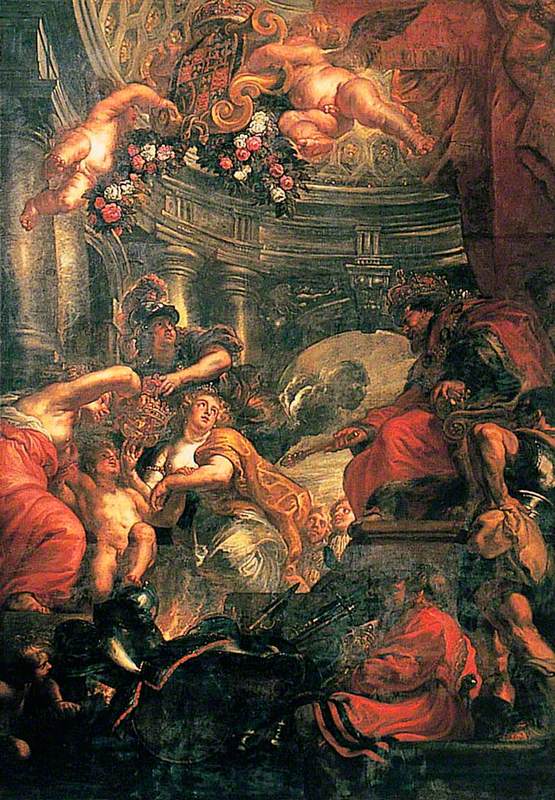
For Philip IV of Spain, he produced more than a hundred mythological and animal pictures for a royal hunting lodge near Madrid. Many are now in the Prado, Madrid.
Alongside these royal commissions, in the 1620s Rubens became a diplomat – he spoke Flemish, Italian, French, German, Latin and Spanish. He also had a good temperament for diplomacy and courtly manners. Although his missions failed to secure a lasting peace between the Spanish Netherlands and the Dutch Republic (Holland), he did help to end hostilities between the other key European players in the conflict, Spain and England.
Isabella, his first wife, died in 1626, but he remarried in 1630 – today, the later match might be commented on, as his second wife was Hélène Fourment, the 16-year-old niece of his first!
Portrait of Helena Fourment
(sitter assumed) c.1630–1635
Peter Paul Rubens (1577–1640) 
However, the marriage was by all accounts a happy one, and he settled down, never travelling abroad again. In his own words, he wanted to 'remain home all my life'.
In 1635 he bought a country house, the château of Het Steen, and in his final years, he developed a new passion for painting landscapes. However, The Rainbow Landscape in The Wallace Collection is not a simple representation of what he saw. It also conveys what he thought and felt about the land and humanity's relationship to it. Rubens also painted his new home, Het Steen, in this companion piece to The Rainbow Landscape, now in The National Gallery.
An Autumn Landscape with a View of Het Steen in the Early Morning
probably 1636
Peter Paul Rubens (1577–1640) 
It was these works that John Constable later said had a 'joyous and animated character... In no branch of the art is Rubens greater than in landscape.'
Landscape by Moonlight
1635–1640
Peter Paul Rubens (1577–1640) 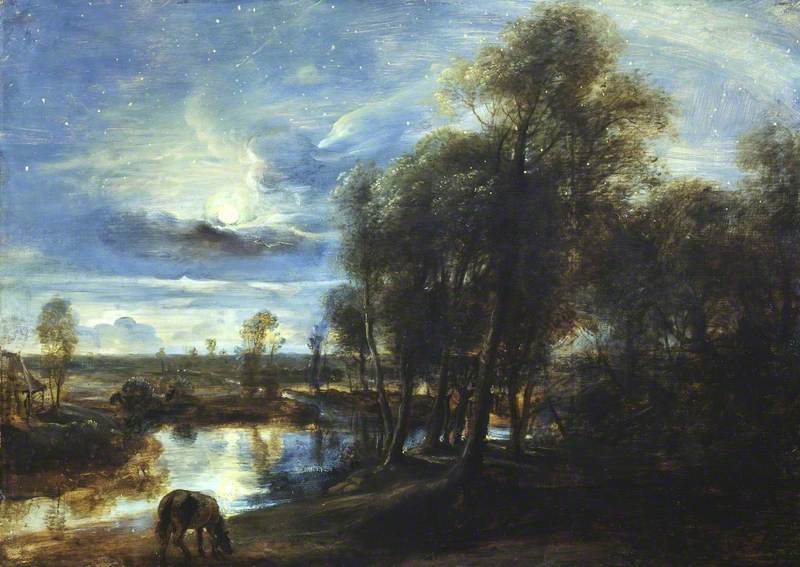
Peter Paul Rubens died in Antwerp in 1640, leaving behind a huge legacy. He has been celebrated ever since as one of the true greats of western art.
Andrew Shore, Head of Content at Art UK
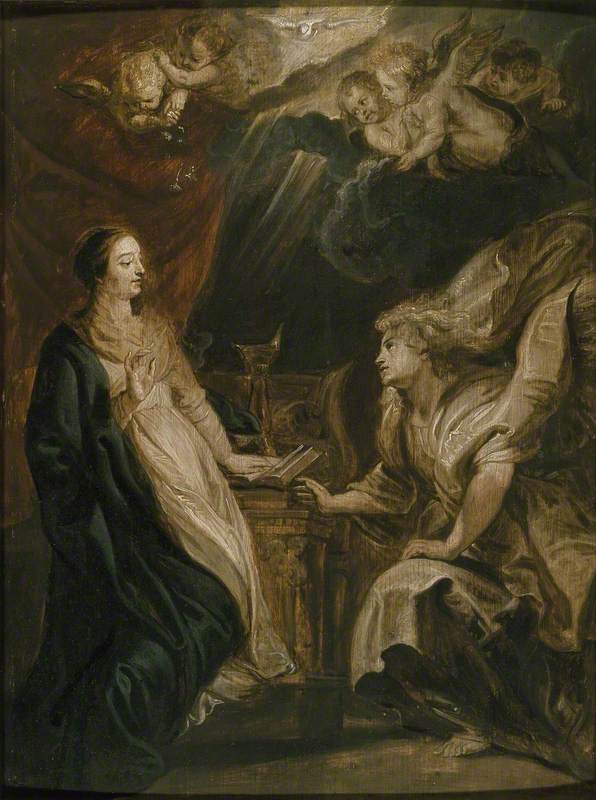
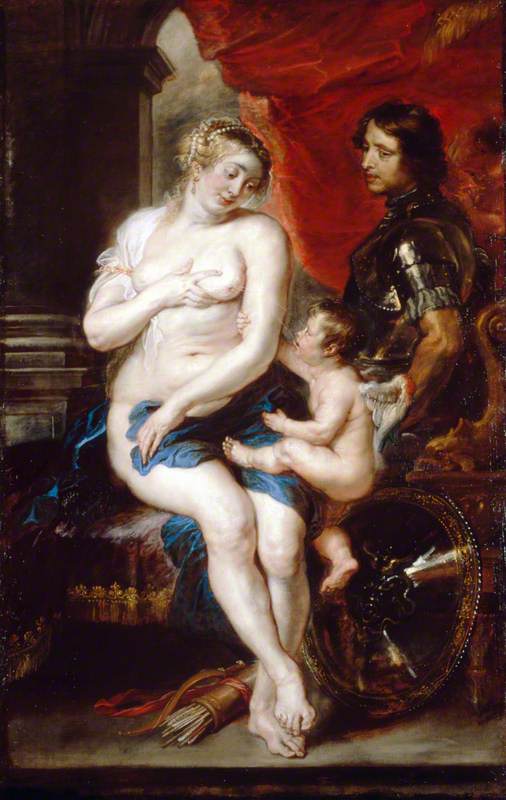
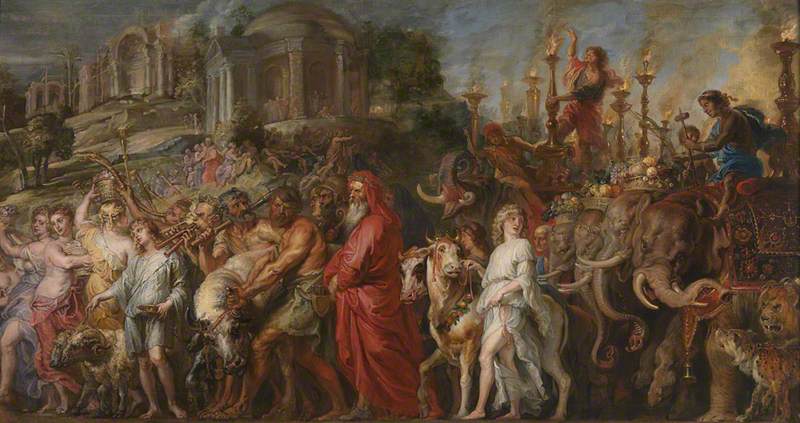
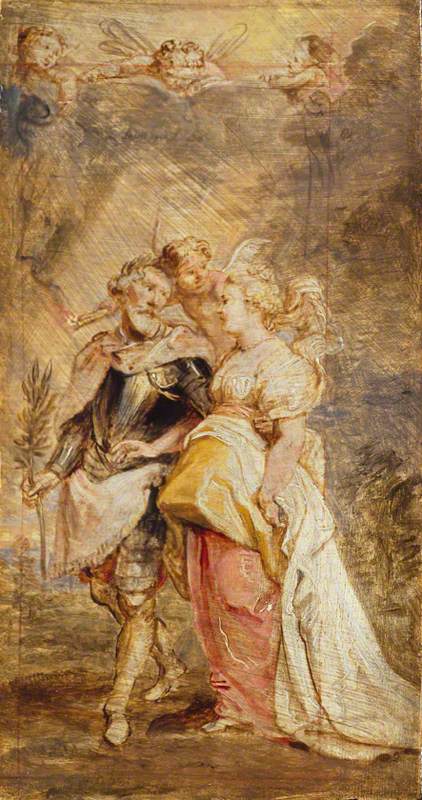
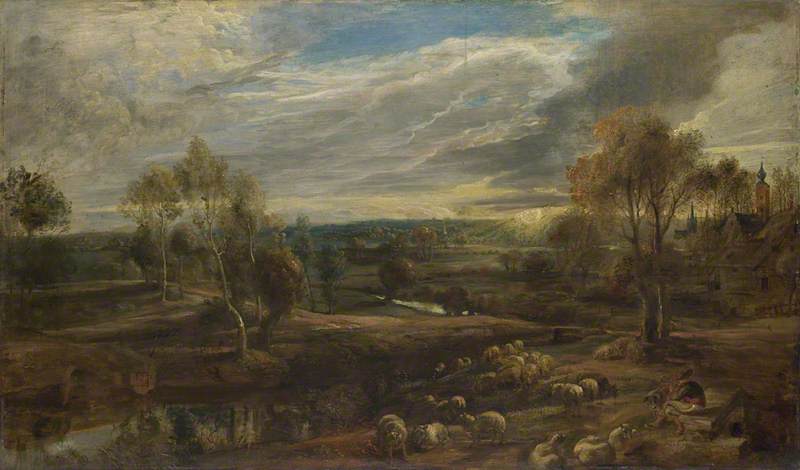
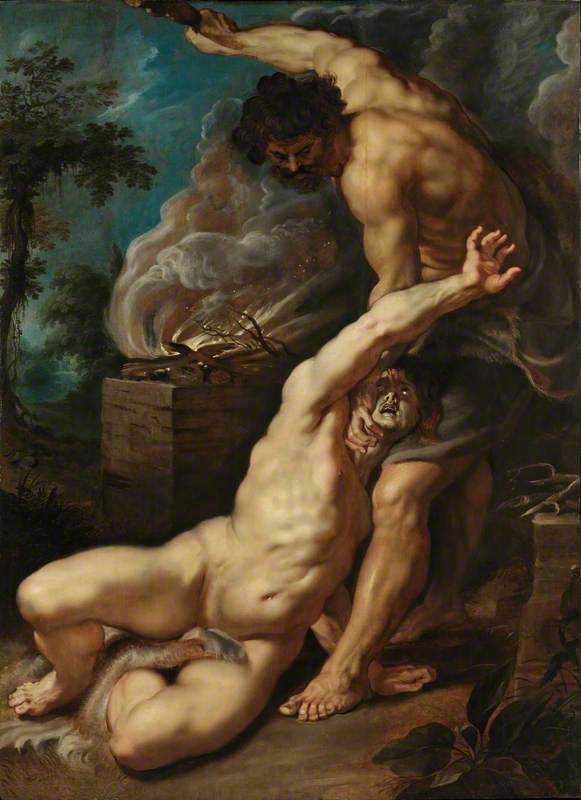

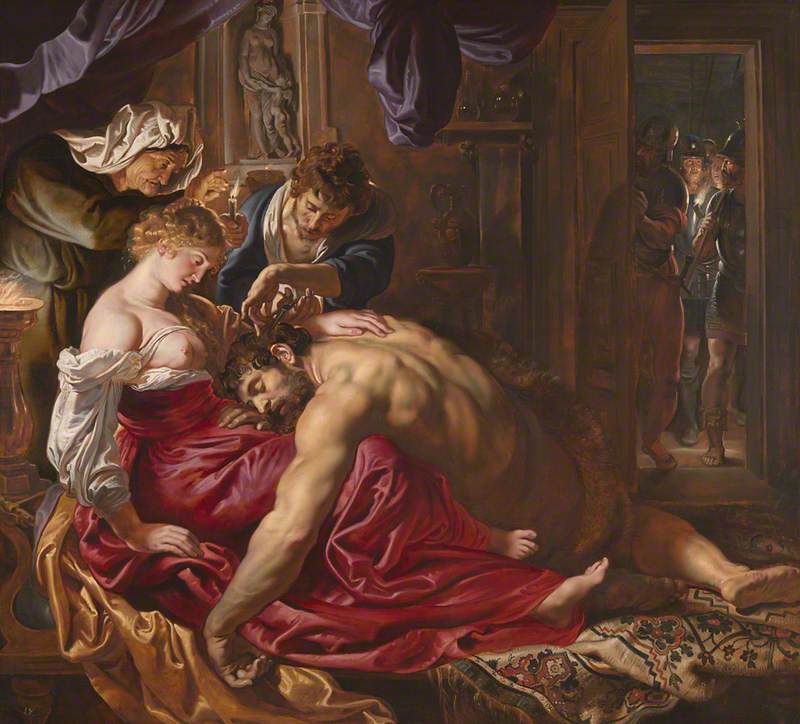
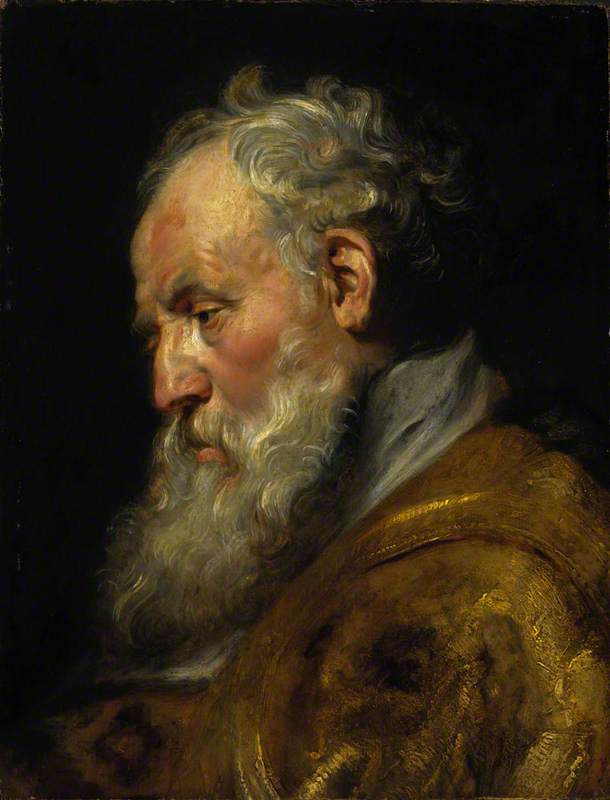


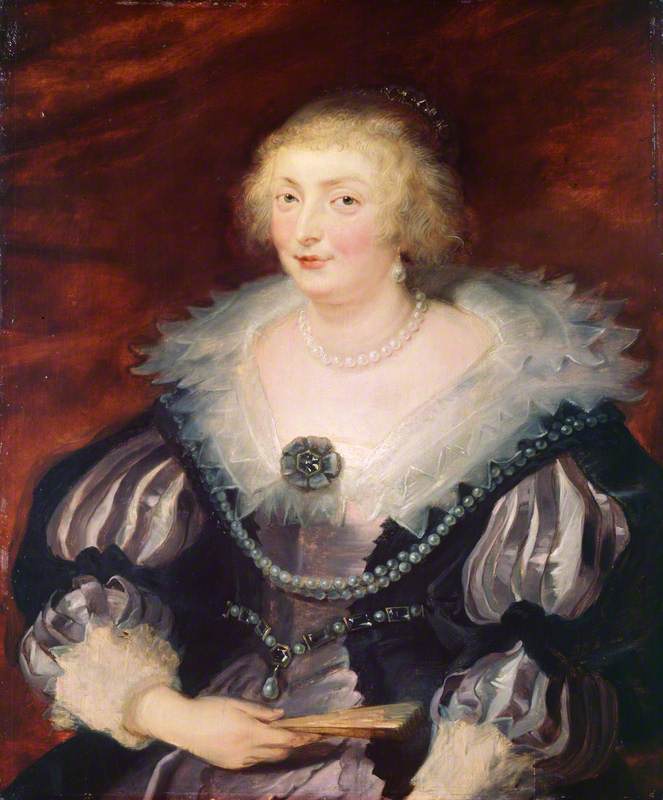
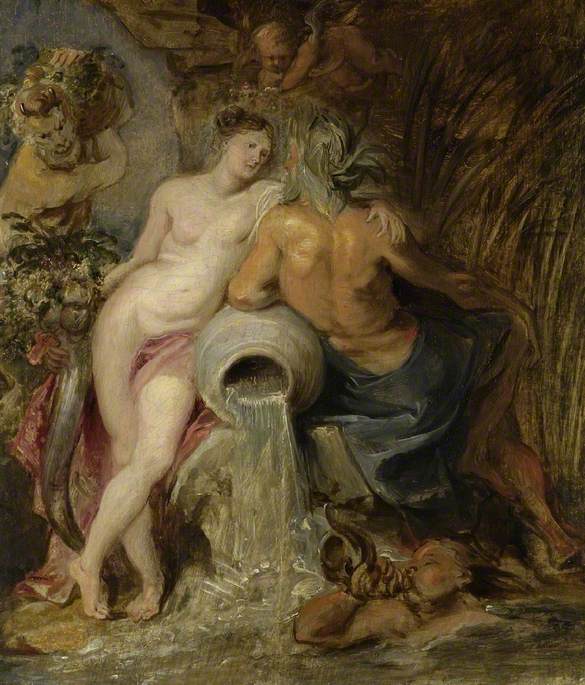
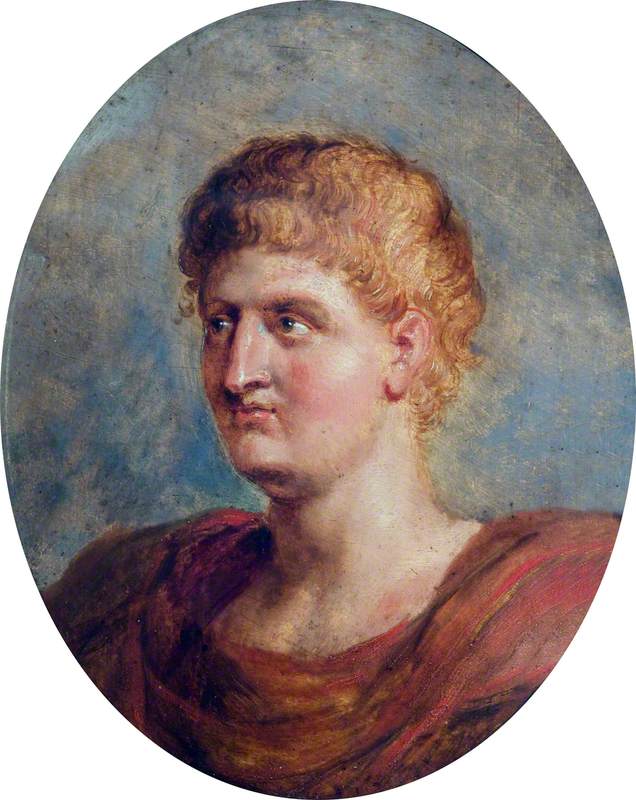

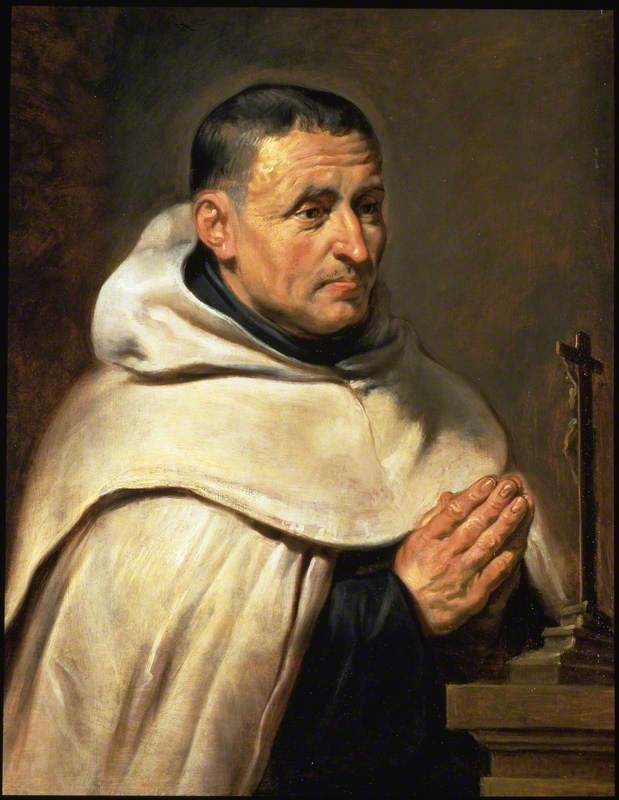
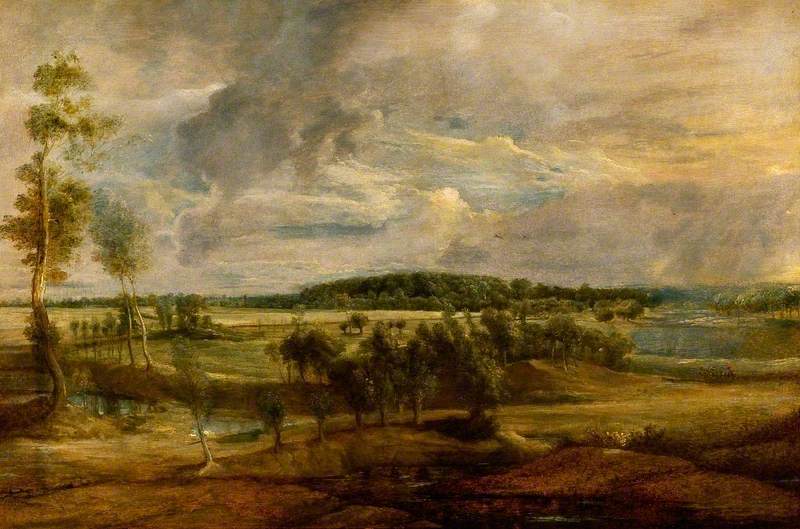

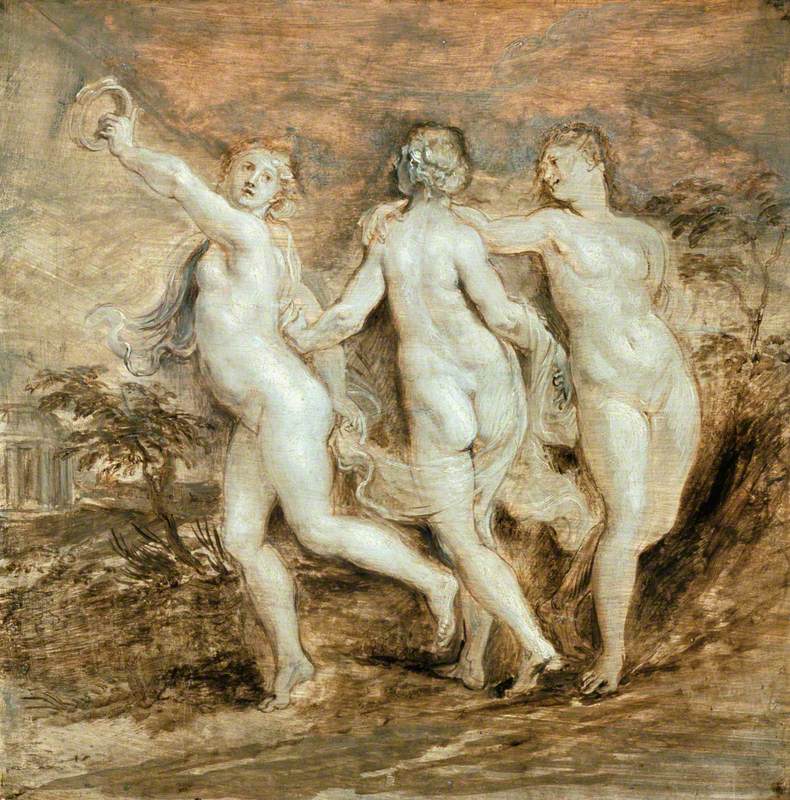
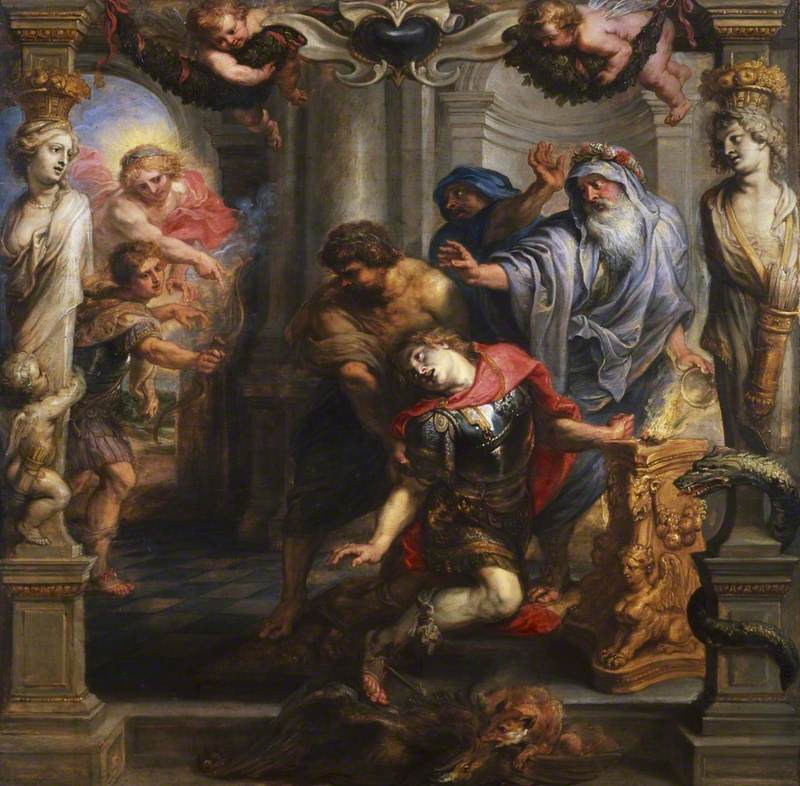
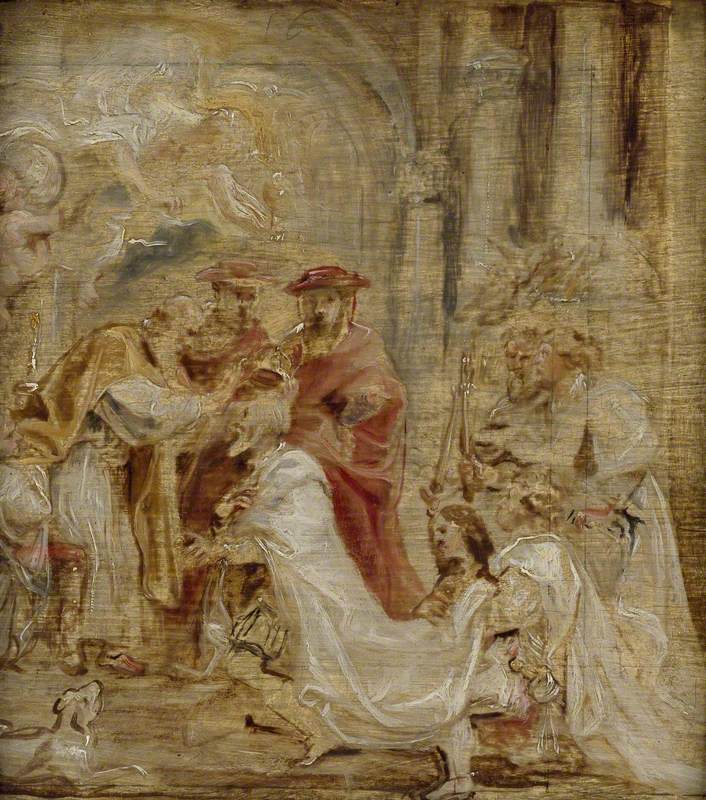

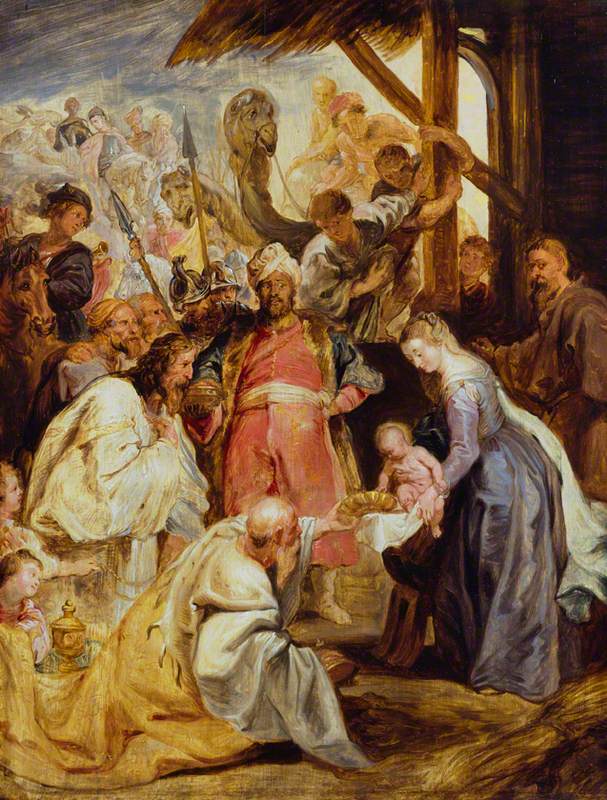
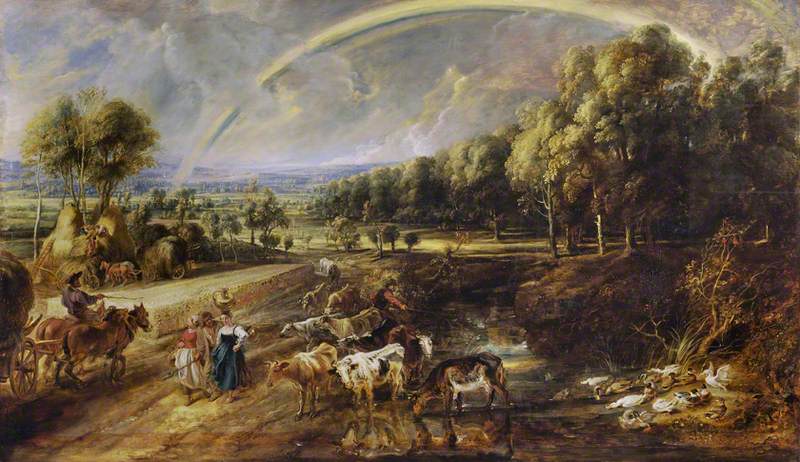


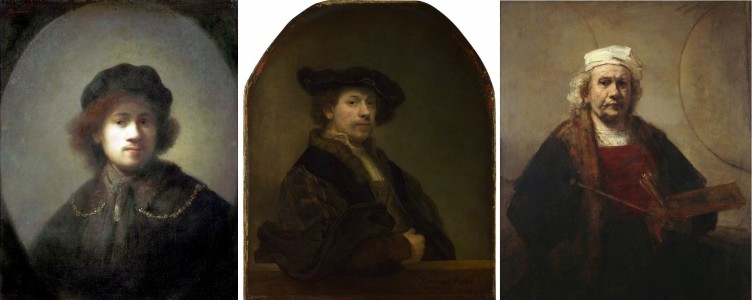
.jpg)
